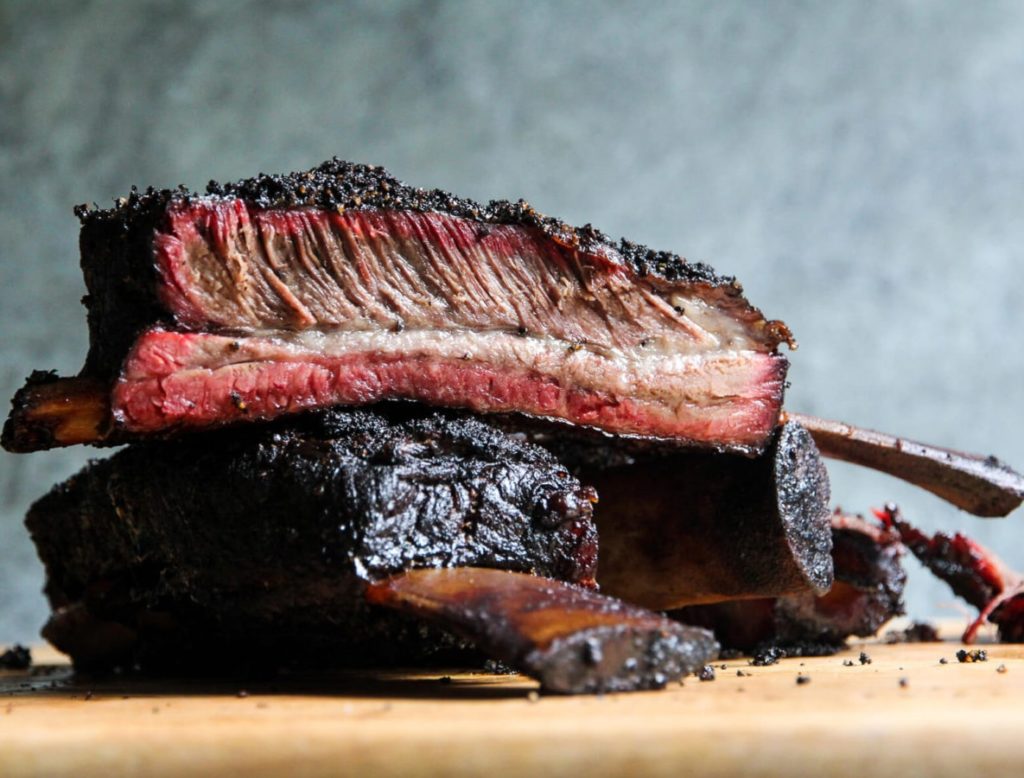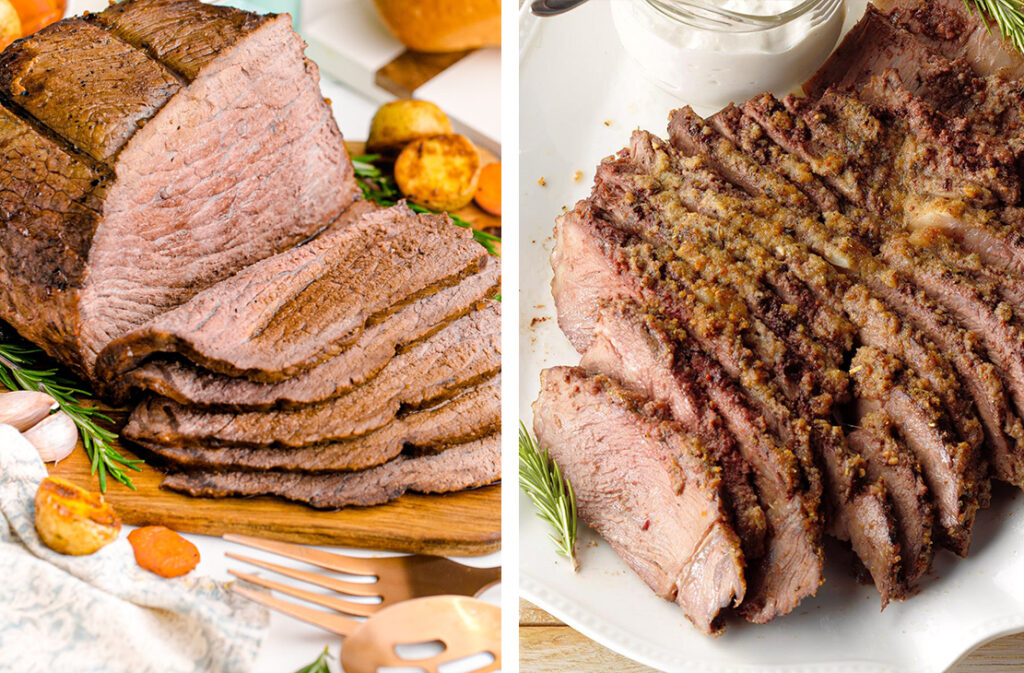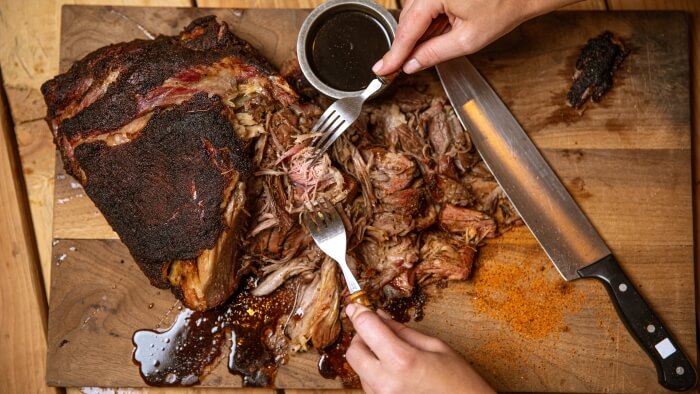
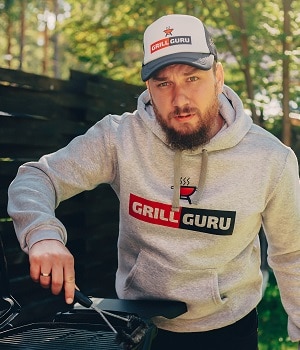
Beef jerky is one of the most beloved and classic snacks in the United States of America. Its delicious flavors, meaty texture, and high protein content have satisfied hungry snackers for decades. Historically, preserved meat has been a staple amongst indigenous populations and travelers, campers, and people living in remote areas with limited or unreliable access to meat, but when it comes to making your own, what is the best meat for beef jerky? When we buy beef jerky in the store, we seldom bother figuring out what type of meat the jerky is made from. However, when making your own, you want to be the best. In this article, we have compiled information about how to choose the best meat for beef jerky. This includes information about the type of meat, the best cuts, the fat content, the animal type, and how to buy the meat so that you can begin this process with confidence!
In the section below, we break down the criteria to pick the best type of meat for beef jerky. In each of the subsections, we will explain topics such as fat content, the difference between intramuscular and intermuscular fat, and the cuts of meat that are budget-friendly but still taste phenomenal.
When it comes to the fat content of the cut of meat you are using for beef jerky, it should be a cut with low-fat content. Leaner cuts of meat make better beef jerky. This means that the beef, or another type of meat you are turning into jerky, should come from a lean animal and also be from a lean part of its body.
The difference between intramuscular fat and intermuscular fat is important when deciding what cut of meat to pick for your jerky. Intramuscular fat is more commonly known as marbling Trusted Source How much fat is in meat? The amount of adipose tissue differs widely among carcasses. The amount of fat stored in adipose tissue and the total quantity of adipose tissue increase rapidly as animals mature (if they are on a high plane of nutrition) and can be affected by the amount and type of feed fed to the animal, hormone balance and genetics. As an animal “fattens? Fat is first deposited in the adipose tissues around the kidney and heart, and in the pelvic canal area; body cavity fat is more prevalent in dairy cattle than in beef cattle. meatscience.org . It is the type of fat that is found within the muscles of the animal, creating the marbled effect that we see in the meat. Intermuscular fat is found in between the muscle layers.
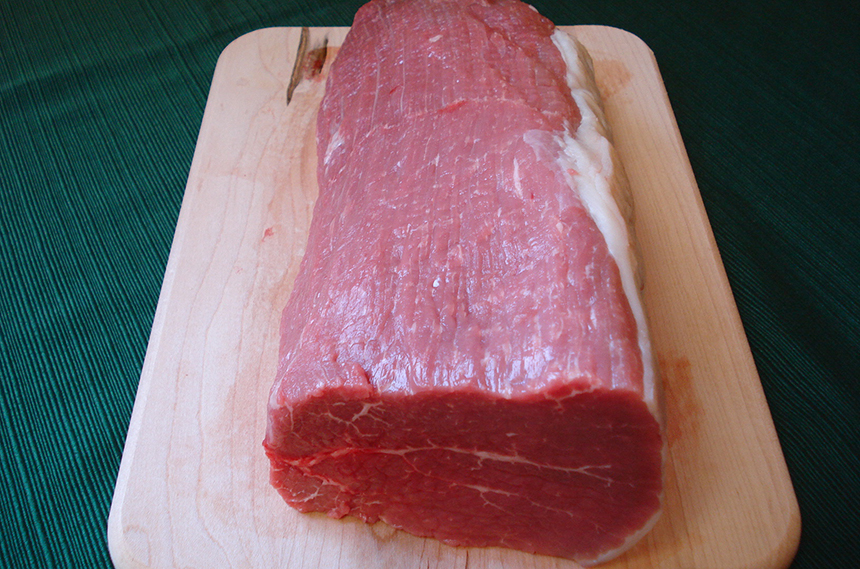
Most people agree that the cheapest type of beef to use for jerky is the eye of round. It is simple meat to use because the green runs in one direction, so it is perfect for beginners to cut into strips and experiment with. Other cuts of beef like top round and bottom round are popular economic cuts as well. These cuts all have great flavor and are simple to use in the jerky and process.
Beyond the economic cuts of meat, many other cuts are delicious and affordable. While not all of these cuts are exactly budget-friendly, depending on what you want to spend, there is a wide range of options. Below are several sections devoted to different types of meat to try turning into beef jerky!
The top round roast is a great cut of meat to use when making beef jerky. Not only is it relatively affordable compared to some other cuts, but it is full of flavor and very lean. When it is dried for jerky, it does not get super greasy. The muscle fiber is very long, so it is perfect for slicing thin into pieces of jerky that will not crumble easily.
The bottom round is a flavorful and affordable cut of meat that is great to use for beef jerky. It comes from the upper and outer muscles on the back legs of the cow. It is known for not being as tender as other cuts of beef, but when it is turned into jerky, it has great flavor for its affordable cost.
It is one of the most economical cuts to use when making beef jerky or other beef dishes. Many people opt to heavily tenderize the meat before they turn it into jerky just to give it a bit more tenderness. However, this is up to personal preference.
The eye of round cut is a perfect cut for people who want their jerky to last a long time. It is also great for people on a budget! The eye of round cut has very little fat content, which can help prolong the life of your beef jerky. The less fat in the beef means the slower the beef jerky will spoil, so beef cuts like the eye of a round are perfect to use for beef jerky. Not to mention, it is one of the most economical cuts of beef to get, so it is very popular with people who want to make beef jerky affordably.
When it comes to making gourmet types of beef jerky, the sirloin tip is a great cut to use. The sirloin tip is a very lean piece of beef, which makes it a popular choice for fancier, more expensive-tasting beef jerky. Although, it is not as tender as some of the round cuts like the top round and the eye of round. The sirloin tip is a delicious cut of meat to use in beef jerky, and many people who are passionate about beef jerky find this cut to be particularly flavorful. Folks often find that the flavors are best brought out using a charcoal smoker, like the Masterbuilt Charcoal Bullet Smoker.
Lifter meat makes particularly delicious beef jerky and is one of the most popular cuts of beef used to make the snack. Lifter meat comes from the muscles surrounding the shoulder blade and the prime rib, which makes it particularly tender and delicious. It makes some of the most flavorful, tender, and long-lasting beef jerky, but depending on where you are, you may have to pay a little bit more to get it.
Flank steak is one of the most popular types of steak. It is delicious, tender, and has created quite the name for itself. Although it is not one of the most popular types of steak for beef jerky, it can still make some fantastic jerky. They are full of flavor and very lean, which makes them popular for beef jerky but not as popular as cuts like the top round, lifter meat, and bottom round.
The pectoral meat of the cow is another fan favorite for beef jerky. It is considered one of the best cuts of meat to turn into jerky along with the top round, lifter meat, and bottom round. Pectoral meat is better to use for beef jerky than flank steak or skirt steak and can be used by experts and beginners alike.
Deer meat, or venison, Trusted Source Venison Jerky – Dehydrating Meat: Tips, Safety, & Recipe | North Carolina Cooperative Extension Did you know that wild game should be frozen for 30 days in order to kill various potential parasites in the meat? While freezing does not kill bacteria that causes foodborne illness like E. Coli or Salmonella, it will help to kill parasites like Trichinella and Toxoplasmosis gondii that cause Trichinellosis and Toxoplasmosis, respectively. In order to kill bacteria, your meat should be heated to 165 degrees F. These may be big words, but know that freezing your wild game and then heating it will greatly reduce the likelihood of contracting a foodborne illness or parasitic infection. We’ll outline two ways to heat jerky meat below. While drying will stop the growth of bacteria, it will not kill off what may already be present. hyde.ces.ncsu.edu is another type of meat not found in a cow that can be turned into jerky. Deer meat is fantastically lean, which means nearly every part of the animal can be turned into deer jerky. However, the best cuts from deer meat come from the eye of round and the rump roast, located near the hind legs. Deer meat has incredibly flavorful and makes a delicious jerky, so it is very popular among people who have access to it.

Elk jerky is another popular type of jerky in North America, commonly sold by small businesses or artisanal jerky makers.
Pork loin jerky is not as common as beef jerky or deer jerky, but it packs a powerful flavor punch. Pork jerky is delicious, but it is incredibly important that it is prepared properly and cooked for at least 4 hours so that the meat does not have time to grow any bacteria. Pork loin is the best part of pork to use to make jerky and is becoming more popular as people become more aware of it.
When it comes to tenderloin, it is not a wildly popular beef jerky cut. It does not hold onto marinades or seasonings as well as other cuts, and once it is turned into jerky, the texture is very soft, which results in a crumbly jerky. However, it is flavorful, so if you can get past the soft texture, you may enjoy this cut.
In this next section, we will talk about some tips and tricks for buying meat to turn into beef jerky. It is important to know things such as how to pick fresh, good meat, how to buy the right amount and size, and how to find a local butcher who can help you figure out what you like and not rip you off. In addition, you should do some investigating to figure out the type of smoker that will work for you. You may need a large smoker for the quantity of meat you want to jerky, or a smaller smoker like the Weber 22-Inch Smokey Mountain Charcoal Smoker might be what is best for you! Whether you like charcoal smokers or electric smokers, read reviews and take the time to find the right one for you. Some prefer not to smoke it but to use a dehydrator, which is a different process.
Choosing fresh meat is incredibly important when it comes to jerky. You do not want to give the meat any time to develop any bacteria or food-borne illnesses that might linger. Get in touch with your local butcher about when they get in new shipments and cuts of meat.

The ratio of raw meat to dehydrated meat or beef jerky is 3 to 1. This means that it will take about 3 lb of fresh meat to yield 1 lb of beef jerky. So, if your end goal is 5 lb of jerky, then you should get 15 lb of meat.
Finding a local butcher who can help you figure out the proper cuts of meat and tell you when new cuts are coming in is an incredibly valuable part of the process. You can always go to your supermarket butcher, but if you have a local butcher in town who operates their own business, try visiting them before a supermarket. Smaller butcher shops tend to yield the best results. These butchers are passionate about what they are doing and are usually excited to help you figure out what cuts work for you. Do not be afraid to call the local butcher shop or butcher department in your town and ask them about when they get in fresh meat, what they carry, and if they have any advice for you when picking meat.
Knowing what you like is another important part of picking the meat. Do some experimenting with different cuts of meat to figure out what satisfies your palate and what you want to replicate with your jerky. By trying a bunch of different kinds of jerky from different parts of the animal or different animals, you can test-run what you might like. Then, you can try to replicate it! Plus, get to know different recipes and discover the seasonings that speak to you! Knowing what you like is very important.
Overall, there are some cuts of meat that are incredibly popular with beef jerky. These cuts are frequently the top round, the eye of round, pectoral meat, and even the flank and skirt steak. Almost any cut of lean meat can be used to turn into jerky, including lean meat from animals that are not even cows! Making jerky is a very fun process and allows you to express yourself creatively while trying new things. It is important to have good equipment, thorough knowledge, and some people that you can turn to with questions along the way. Finding the best meat for beef jerky is a trial and error for some, but now you have a place to begin. Try out the different types of the meet list tomorrow and see what works best for you!

